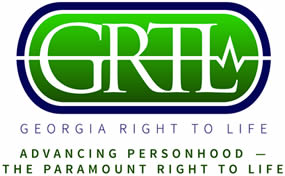 Part 1:
Part 1:
Picture this: You are a young pregnant girl furiously researching Google for ways to get rid of this problem. You are frightened and you cannot ask anyone for help or advice. So, you have turned to the internet for assistance. You reason that it is very difficult to acquire a surgical abortion and they seem dangerous and scary, but you have heard about abortion pills. From what you have heard chemical abortions are less invasive than surgical. However, so many questions plague your mind. Are these drugs safe? What will happen to me after I take them? Then you see these words appear on your computer screen on Plannedparenthood.org:
“Medication abortion is really safe and effective. It’s a super common way to have an abortion, and millions of people have used it safely.”[1]
“Serious, long-term emotional problems after an abortion are rare, and about as uncommon as they are after giving birth.” [2]
The tragedy of this situation is that if you are this young girl, you may believe these duplicitous statements. In fact, Planned Parenthood’s assessments of the drug and its impact are completely opposite to reality.
The Truth:
Chemical abortions are very dangerous. It’s quite common for medical attention to be required shortly after the drugs have gone into effect.
Serious, long-term emotional problems after an abortion are very common and many of these mental and emotional scars last a lifetime.
The Drugs:
The lethal dose is a mix of Mifeprex (also called RU-486 or mifepristone) and Cytotec (commonly known as misoprostol.)” [3] “A person takes mifepristone within 10 weeks from their last period. One or two days later they take misoprostol. Both drugs work individually, but they are more effective together. Mifepristone blocks progesterone’s action on the uterus, making it incapable of supporting a pregnancy. Misoprostol, among other things, starts uterine contractions.”[4] In layman’s terms, the baby’s development in the womb is ended since he has been starved to death. Then the women’s uterus begins to contract, prematurely forcing the now dead child out of the womb.
History of the Pill:
If you are an avid reader of this newsletter, you may remember the article that we published highlighting the Alliance Defending Freedom’s legal battle against the FDA and the history surrounding that dispute. However, for those who are not familiar with the background of this issue here is a small synopsis:
In September of 1988, the French Ministry of Health approved the national distribution of the chemical abortion drug named RU-486. This drug had been developed by the French pharmaceutical company, Roussel-Uclaf. This company was once owned by a German parent company called, Hoechst AG, which had been previously named I.G. Farben and was “the manufacturer of Zyklon-B, which was used in the gas chambers of Auschwitz.” (Do with that information what you will.)
Although the FDA did not allow for the distribution of RU-486 within the United States, the drug had been in the country since 1982. The FDA allowed the entrance of the drug restricted under a permit for large-scale testing by the Population Council. However, shortly after that the FDA ruled to revoke the permit because of cultural uproar against its distribution.
Both feminist and pro-abortion activist groups began to put pressure on the FDA to release the drug to the public. As the tension surrounding abortion grew in the United States, Roussel Uclaf made it clear that they wanted no part in this American political debate. Although the FDA received pressure from both sides of the issue, the abortion drug remained inaccessible. Shortly after his election, President Bill Clinton put great pressure on Roussel Uclaf to arrange for RU-486 to be licensed in the United States. The pro-abortionists were able to get their way.
There were still many concerns surrounding the effects and usages of the drugs. However, the political pressure that the FDA had received from the White House, Public Council, and various militant activist groups became too much.
On September 28, 2000, the FDA approved the distribution of Mifeprex as an abortifacient. To mitigate the risks, the regime required at least three in-person visits to a licensed physician. However, these restrictions were not enough to prevent disasters.[5]
As a result of the FDA’s serious mishandling of the Mifeprex issue, the anti-life advocates were able to successfully breakdown safety protocols over the next few years. This breakdown led to a furthering of the harm already begun by the authorization of Mifeprex in the United States.
RU-486 has been developed to end the life of a human child. Therefore, GRTL does not support the use of this drug, even with the original FDA protocols. However, we do support women having access to the facts regarding this regimen so that they have the option to protect themselves and hopefully to protect their child.
In part two of, “Chemical Abortion: The Pills, the Politics, and the Problems” we will cover the deregulation of these dangerous drugs and the consequences.
___
[1] https://www.plannedparenthood.org/learn/abortion/the-abortion-pill/how-safe-is-the-abortion-pill
[2] Ibid
[3] https://www.scientificamerican.com/article/how-medication-abortion-with-ru-486-mifepristone-works/
[4] Ibid.
[5] file:///Users/virgilfinnell/Downloads/FDA-2002-P-0364-0001_attachment_1%20(1).pdf
